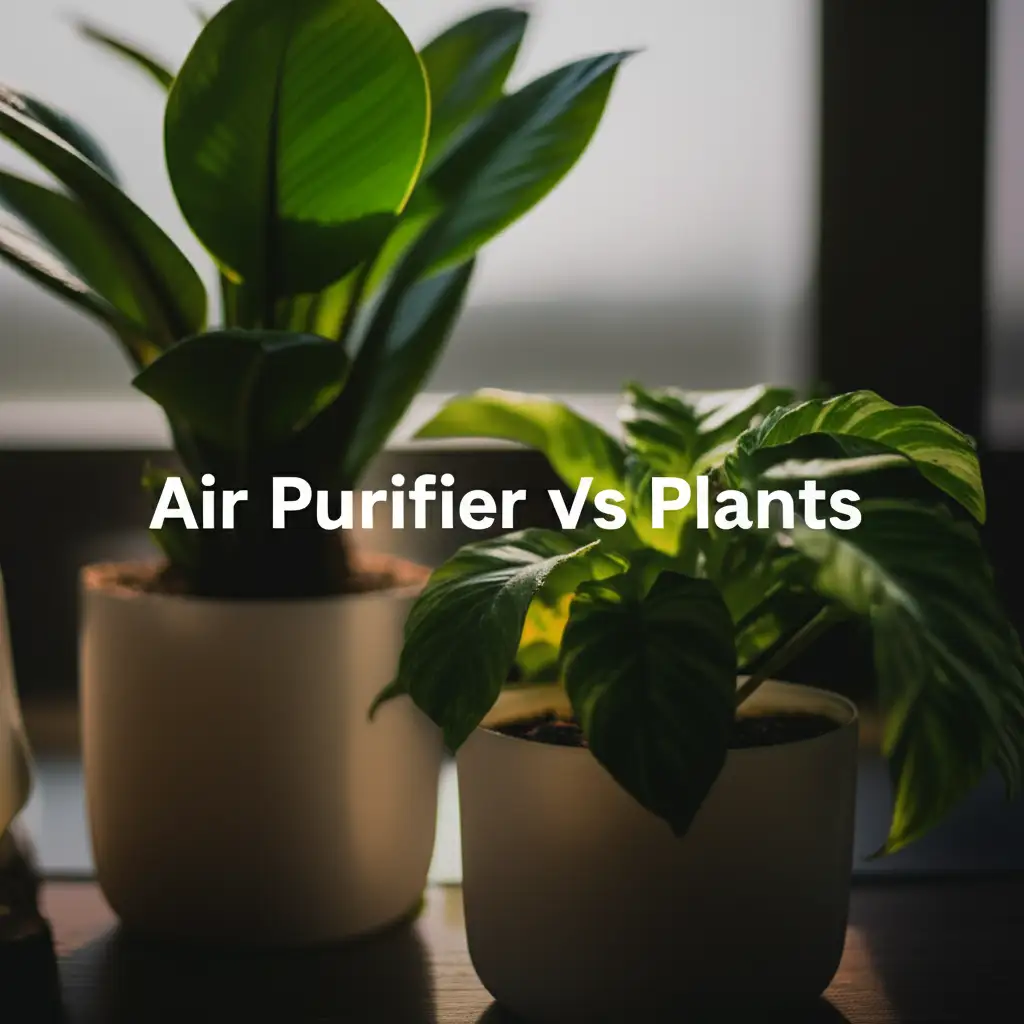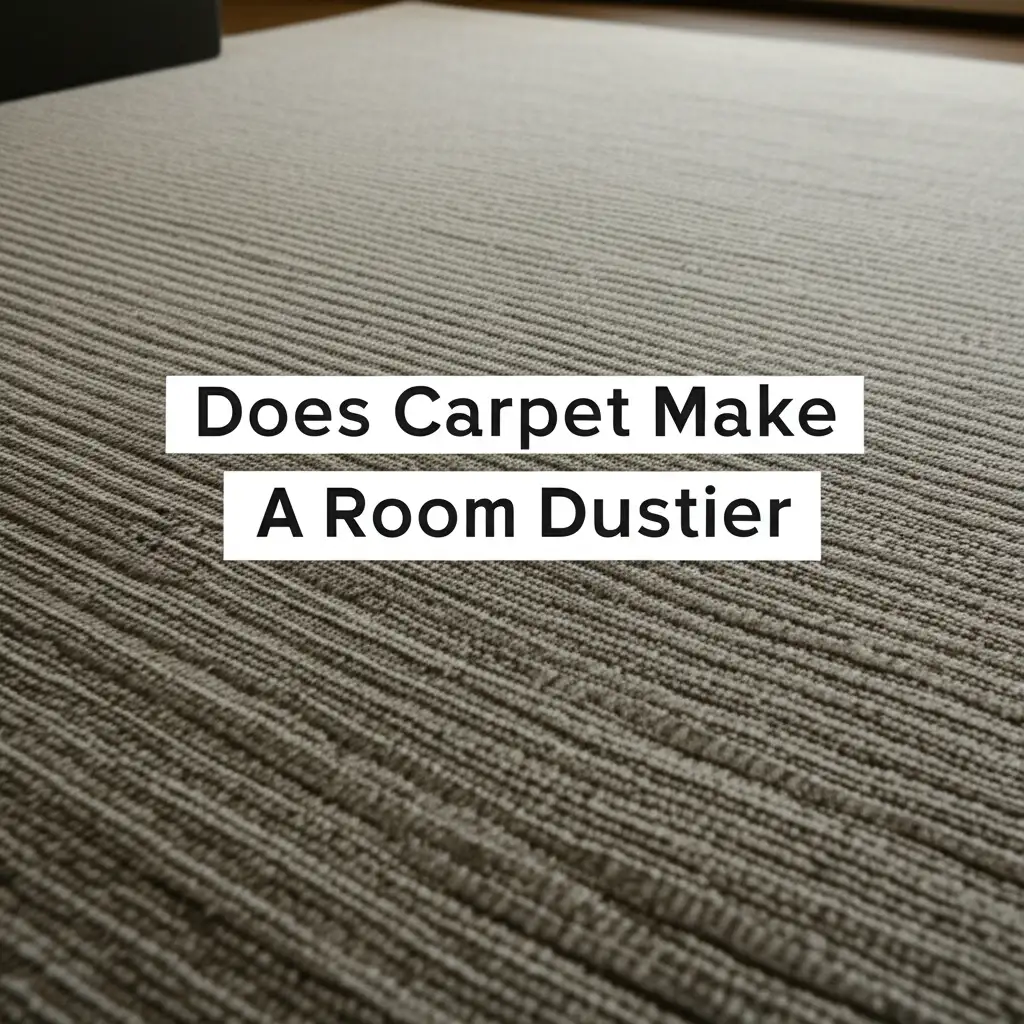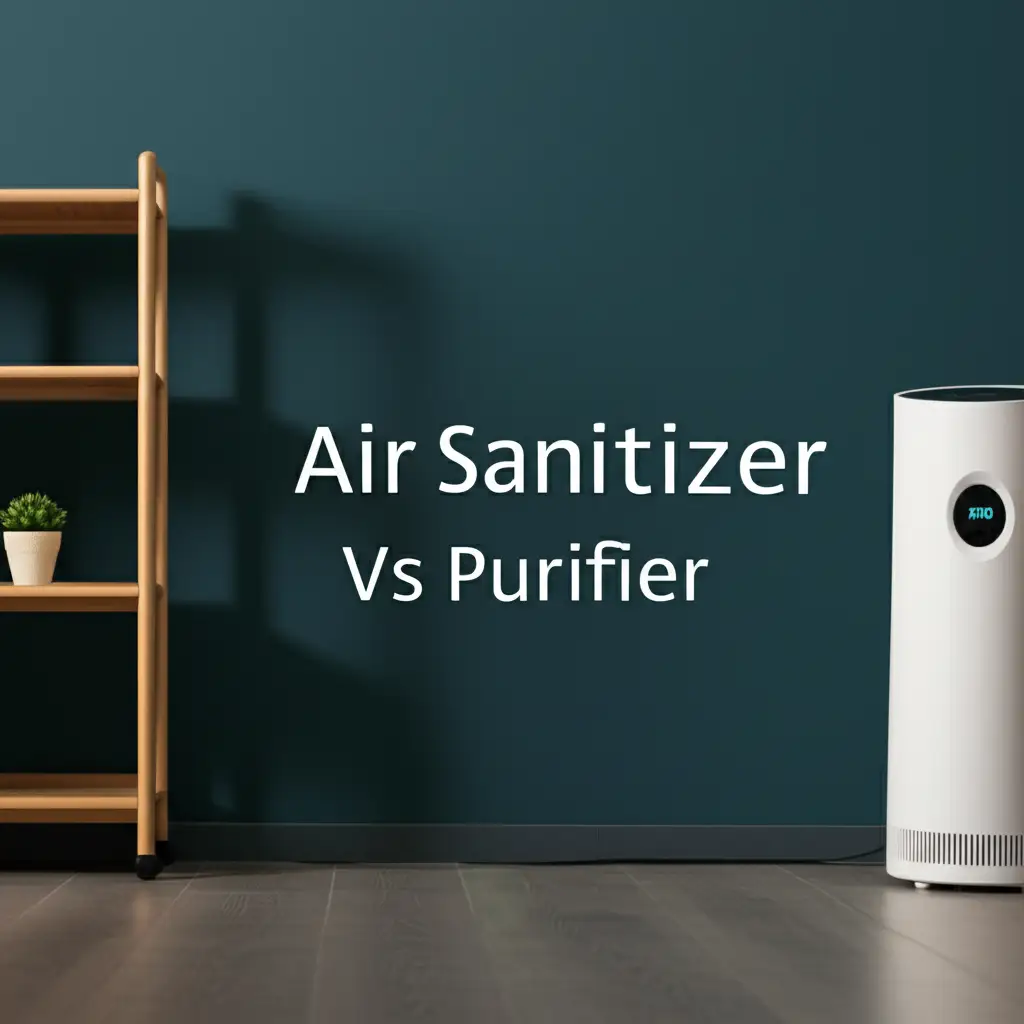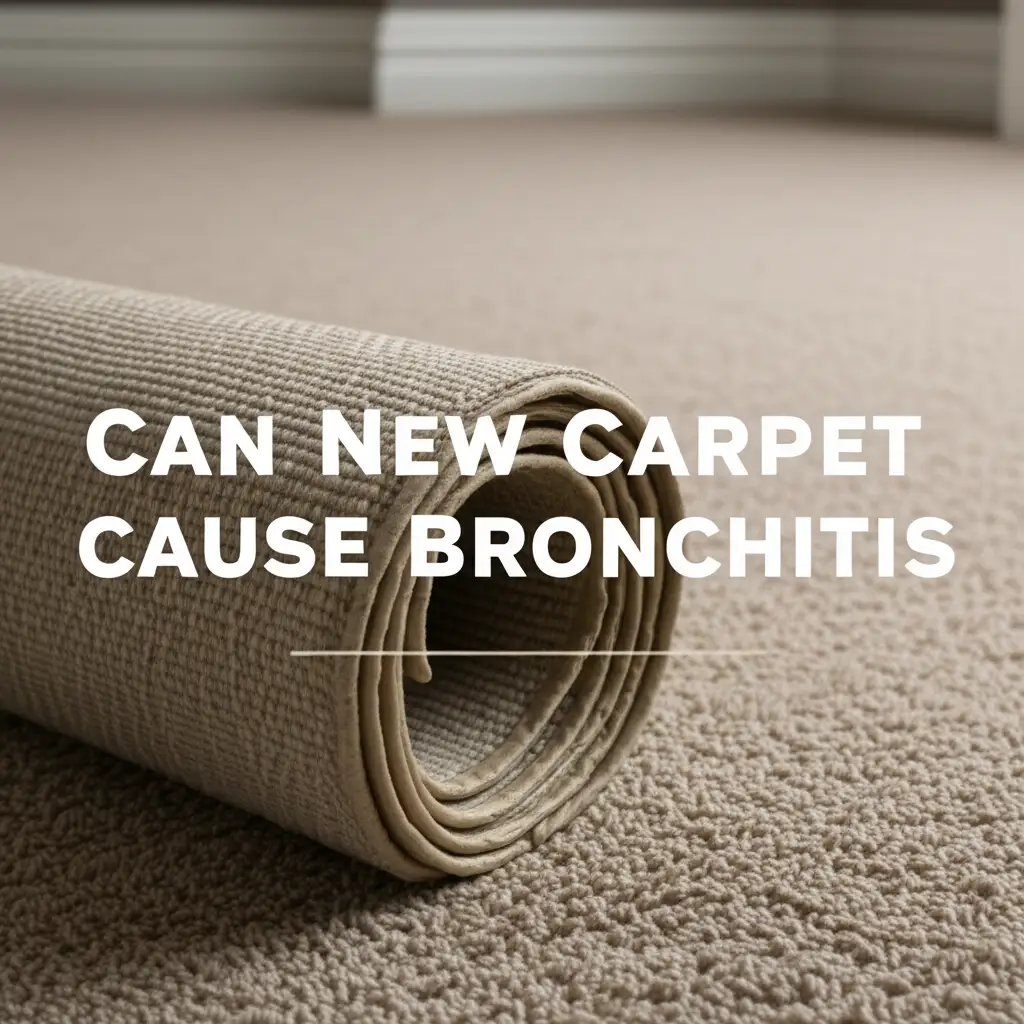· Elira Thomsen · Indoor Air Quality · 17 min read
Air Purifier Vs Plants

Air Purifier Vs Plants: Which Cleans Air Better?
I often think about the air inside my home. Is it clean? Can I make it better? Many people ask themselves this same question. When it comes to improving indoor air quality, two popular choices appear: air purifiers and common houseplants. Both promise cleaner air, but they work in very different ways.
This article explores the core differences between an air purifier vs plants. We will look at how each cleans the air. We will compare their effectiveness against various pollutants. I will discuss the costs, maintenance, and benefits of each option. By the end, you will understand which solution, or combination, best suits your home environment. Let us find out the best path to fresher air.
Takeaway
- Air purifiers actively filter a wide range of indoor pollutants, including dust, pollen, pet dander, and VOCs, with measurable efficiency.
- Plants remove some VOCs and produce oxygen, but their air-cleaning capacity is limited and requires many plants for a noticeable effect.
- Effectiveness against fine particles is higher with air purifiers, especially those with HEPA filters.
- Cost and maintenance vary, with purifiers requiring filter replacements and electricity, while plants need care and specific light conditions.
- The best solution for most homes is a combination of both for comprehensive air quality improvement and aesthetic appeal.
Clear, Concise Answer
An air purifier offers more effective, measurable air cleaning for a wide range of pollutants. Plants provide some air purification and aesthetic benefits, but their cleaning power is limited. For truly cleaner air, an air purifier is more powerful, while plants offer a natural complement.
Understanding Indoor Air Pollution
Indoor air often contains more pollutants than outdoor air. This fact surprises many people. Our homes are sealed environments, trapping many particles inside. I think about all the things that produce these airborne substances.
Common sources include cooking fumes and cleaning products. Building materials also release gases. Even our pets and ourselves contribute dust and dander. These pollutants include various types of particles and gases. We breathe them in constantly.
What Makes Indoor Air Dirty?
Many elements make indoor air less than ideal. Particle pollution is a big problem. This includes dust mites, pet dander, and pollen. Mold spores can also float in the air, especially in humid areas. These tiny particles cause allergies and breathing issues for some.
Chemical gases are another concern. Volatile organic compounds, or VOCs, come from many household items. Paints, furniture, and even scented candles release VOCs. These chemicals cause short-term health problems like headaches. Long-term exposure can lead to more serious issues. Understanding these sources helps us choose the right cleaning method.
Health Effects of Poor Indoor Air
Breathing poor quality air affects our health. Short-term effects include sneezing, coughing, and eye irritation. People with asthma or allergies feel these symptoms more acutely. I notice that my nose feels stuffy when the air quality is low.
Long-term exposure raises bigger worries. Chronic respiratory issues can develop. Certain pollutants link to heart disease and cancer. Children and elderly people are more vulnerable. Improving indoor air quality is vital for our well-being. It is an investment in health. We must consider every option to make our living spaces healthier.
How Air Purifiers Work: Technology and Efficiency
Air purifiers actively clean indoor air. They pull air in and remove harmful particles. Most purifiers use a system of fans and filters. The air goes through these filters before returning to the room. This process removes many common pollutants.
I find it helpful to understand the different types of filters. Each filter targets specific kinds of contaminants. Knowing this helps me choose the right air purifier. Some filters are good for particles. Others target gases and odors.
Common Air Purifier Technologies
Modern air purifiers use several technologies. The HEPA filter is the most common and effective. HEPA stands for High-Efficiency Particulate Air. It traps 99.97% of particles 0.3 microns in size. This includes dust, pollen, pet dander, and mold spores. I know this filter makes a big difference for allergy sufferers. You can learn more about this by reading Air Purifier Vs HEPA Filter.
Another key component is the activated carbon filter. This filter specializes in removing gases and odors. It traps VOCs, smoke, and cooking smells. Some purifiers also use pre-filters to catch larger particles. This helps extend the life of the main filters. Some devices include UV-C light to kill bacteria and viruses. Other types of air purification devices like air ionizers also exist, offering different ways to clean the air, as discussed in Air Purifier Vs Air Ionizer.
Efficiency and Coverage Area
Air purifiers rate their efficiency by how much air they clean. The Clean Air Delivery Rate (CADR) is a key metric. CADR shows how quickly a purifier removes smoke, pollen, and dust. A higher CADR means faster cleaning for larger rooms. I always check the CADR before buying a unit.
Manufacturers specify a coverage area for each model. This tells me the maximum room size the purifier can effectively clean. Using a purifier in a room larger than its recommended size reduces its effectiveness. Placing the purifier in the correct location also helps. It should sit in an open area, not tucked away in a corner. Air purifiers provide a measurable, active way to clean the air in our homes.
The Green Approach: How Plants Clean Air
Plants offer a natural way to interact with our indoor air. They take in carbon dioxide and release oxygen. This basic process is photosynthesis. Beyond that, certain plants also absorb specific pollutants from the air. This process, called phytoremediation, happens through their leaves and roots.
I find the idea of plants cleaning my air very appealing. They add beauty to a space. They also bring a sense of nature indoors. However, their air-cleaning capacity is different from an electric device. It is a slower and more localized process.
How Plants Absorb Pollutants
Plants absorb airborne chemicals through tiny pores on their leaves. These pores are called stomata. Once inside the leaf, the chemicals move down to the root system. Microorganisms in the soil around the roots then break down these pollutants. This is a vital part of the plant’s air purification system.
The plant itself also metabolizes some chemicals. This process detoxifies the substances. It converts them into harmless compounds. This natural cycle works continuously. It helps reduce the presence of some harmful gases in the air.
Limitations of Plant-Based Air Purification
While plants do help, their air-cleaning power is limited. A single plant only processes a small volume of air. NASA’s famous clean air study, which often gets cited, used a controlled environment. This setup was very different from a typical home. The study showed plants could remove certain VOCs. However, it required a high density of plants in a small, sealed space.
For a noticeable effect in a normal room, you would need many plants. We are talking dozens, not just a few. The National Research Council later concluded that plants have little impact on indoor air. This is true for a standard home environment. Plants mainly help with low levels of specific VOCs. They do not remove dust, pollen, or pet dander. So, while plants are good, they are not a complete solution for overall air purification.
Effectiveness Against Specific Pollutants: A Head-to-Head
When comparing an air purifier vs plants, their effectiveness against different pollutants is key. Each method has strengths. Each also has limitations. I want to understand what each one truly cleans. This helps me decide which is best for my specific needs.
Indoor air contains a mix of particles and gases. Some methods are great for one type. Other methods are better for another. Let us look at how well each option tackles common indoor air issues.
Particle Removal (Dust, Pollen, Pet Dander)
Air purifiers are highly effective at removing airborne particles. Models with HEPA filters trap tiny particles. This includes dust, pollen, pet dander, and mold spores. These are common allergens and irritants. A good air purifier captures 99.97% of particles as small as 0.3 microns. This makes a noticeable difference for allergy sufferers.
Plants, on the other hand, do not actively filter particles from the air. Their leaves can collect some dust, but this is a passive process. The dust just settles on the leaves. It does not get removed from the air circulation. You still need to wipe the leaves clean. Plants do not help with pet dander or pollen floating around. For particle removal, air purifiers clearly win.
VOCs and Odor Removal
Volatile organic compounds (VOCs) are chemical gases. They come from paints, cleaning products, and furniture. Both air purifiers and plants can help with VOCs. Air purifiers use activated carbon filters for this. Activated carbon is very porous. It absorbs gas molecules like a sponge. This makes purifiers very effective at reducing VOCs and odors like smoke or cooking smells.
Certain plants can absorb some VOCs. Studies show plants like peace lily, snake plant, and spider plant can process benzene and formaldehyde. However, their capacity is limited. You would need many plants to make a significant impact on VOC levels in a home. For strong odors or high VOC concentrations, an air purifier with activated carbon is much more efficient. While plants offer some help, they are not a primary solution for serious VOC problems.
Bacteria, Viruses, and Mold Spores
Air purifiers with HEPA filters capture mold spores. Some purifiers also include UV-C light technology. This light can kill bacteria and viruses that pass through the unit. This adds an extra layer of protection against airborne pathogens. It helps reduce the spread of illness in the home.
Plants do not kill airborne bacteria or viruses. While they might slightly reduce mold by absorbing some moisture, they are not a direct solution. In fact, overwatering plants can create conditions for mold growth in the soil. This can release more mold spores into the air. So, for targeting airborne microbes, air purifiers provide a much more direct and effective approach. For situations involving mold, you might also consider what helps more between an air purifier and a dehumidifier for mold, as discussed in Air Purifier Vs Dehumidifier For Mold.
Maintenance, Cost, and Energy Consumption
When choosing between an air purifier vs plants, long-term factors matter. Maintenance, initial cost, and ongoing energy use are important considerations. I always think about how much time and money each option will require over time. Both have their own set of needs.
Understanding these aspects helps in making a practical decision. It is not just about what cleans the air. It is also about what fits my lifestyle and budget. Let us explore these practicalities.
Air Purifier Maintenance and Cost
Air purifiers require regular filter replacement. HEPA filters typically last 6-12 months. Activated carbon filters might need changing every 3-6 months. The cost of replacement filters adds up over time. These costs vary by model and brand. I usually check filter prices before buying a purifier. This gives me a clear idea of the ongoing expense.
Air purifiers use electricity to run. The energy consumption depends on the model and fan speed. Smaller units use less power. Larger units or those running on high speed use more. I consider the energy cost as part of the overall expense. Some purifiers have smart features. They run only when needed. This helps save energy. The initial purchase price of an air purifier also varies widely. Basic models are affordable. High-end units with advanced features can be expensive.
Plant Maintenance and Cost
Plants also need ongoing care. They require regular watering. The right amount of sunlight is also critical. Some plants need specific humidity levels. I often forget to water my plants, so this is a factor for me. Overwatering can lead to root rot or mold growth. Underwatering makes plants wilt and die.
Plants need occasional repotting as they grow. They also benefit from fertilizer. These supplies add to the cost. The initial cost of plants varies. Small plants are inexpensive. Large, mature plants can be costly. You might need many plants to see any air-cleaning effect. This means buying many pots and bags of soil. The overall maintenance for plants is time and attention. There is no electricity cost, but there is a time cost.
Comparing Energy and Environmental Impact
Air purifiers consume electricity. This adds to your carbon footprint, depending on your energy source. However, they provide targeted, measurable air cleaning. Their filters become waste when replaced. Some companies offer recycling programs for old filters.
Plants are natural and produce oxygen. They are generally considered environmentally friendly. They do not use electricity. However, the production of pots, soil, and fertilizers has an environmental impact. Transportation of plants also uses resources. I see a trade-off. Air purifiers offer active cleaning with some energy use. Plants offer passive cleaning with minimal environmental impact after purchase. This comparison helps me weigh the true costs and benefits.
Health and Aesthetic Benefits
Beyond air cleaning, both air purifiers and plants offer additional benefits. These benefits affect our health and the feel of our home. I consider these aspects important when making a choice. Sometimes, the added value goes beyond just clean air.
It is about creating a comfortable and healthy living space. Let us explore the extra perks each option provides. These benefits can influence your final decision.
Health Benefits of Air Purifiers
Air purifiers significantly reduce airborne allergens. This is a major benefit for people with allergies or asthma. By removing pollen, dust mites, and pet dander, purifiers alleviate symptoms. I feel much better when my air purifier runs during allergy season. It helps me breathe easier.
They also filter out smoke particles and certain VOCs. This helps protect lung health. Cleaner air means less irritation to the respiratory system. For babies and young children, clean air is especially vital for their developing lungs. While an air purifier differs from a humidifier, both aim to improve air quality and can be beneficial for babies, as explored in Air Purifier Vs Humidifier For Baby. Better indoor air quality contributes to overall wellness. It can lead to better sleep. It reduces the risk of respiratory illnesses. This direct health impact makes air purifiers a valuable tool.
Aesthetic and Wellness Benefits of Plants
Plants bring natural beauty into our homes. They add color and texture to any room. I love how plants make my space feel more alive and calming. They create a peaceful atmosphere. This visual appeal is a big reason many people choose plants.
Beyond aesthetics, plants have wellness benefits. Studies suggest being around plants reduces stress levels. It can improve mood and increase focus. Caring for plants can be a relaxing hobby. This connection to nature enhances our mental well-being. Plants also slightly increase humidity levels through transpiration. This can be beneficial in dry climates. While their air cleaning is limited, their positive impact on mental health and home decor is undeniable. They make a space feel more inviting and fresh.
Choosing Your Path: Standalone or Combination?
After looking at an air purifier vs plants, you might wonder which is best. The answer is not always simple. It depends on your specific needs and priorities. I often find that a balanced approach works best for many homes.
Sometimes, one solution stands out as more suitable. Other times, combining both offers the most comprehensive benefits. Let us consider different scenarios and what makes sense for each. This helps you make an informed decision for your home.
When an Air Purifier is the Best Choice
An air purifier is the clear choice for specific air quality concerns. If you or family members have severe allergies or asthma, a HEPA air purifier is essential. It effectively removes the pollen, dust, and pet dander that trigger symptoms. If you live in an area with high outdoor pollution, or if you are concerned about smoke from cooking or fireplaces, an air purifier provides active protection.
For homes with new furniture, paint, or carpets, VOC levels can be high. An air purifier with an activated carbon filter will efficiently reduce these chemical gases. If you need measurable, fast, and comprehensive air cleaning for a wide range of pollutants, an air purifier is superior. It offers consistent performance regardless of light or watering conditions.
When Plants are a Good Complement or Choice
Plants are an excellent choice if your primary goal is aesthetics and mood enhancement. They add life and color to a room. If you enjoy gardening and want to connect with nature indoors, plants are perfect. For those with mild air quality concerns, a few plants can contribute slightly to VOC reduction and overall freshness.
Plants are also a good option if you seek a low-tech, passive approach to environmental improvement. They are quiet and do not use electricity. While they do not replace the powerful filtration of an air purifier, they offer a natural, calming presence. They are also a wonderful choice for people who simply love greenery.
The Power of Combination: Best of Both Worlds
For most people, combining an air purifier with plants offers the best solution. An air purifier actively cleans the air of particles and most gases. It tackles the major pollutants efficiently. This ensures a healthier breathing environment.
Adding plants then provides additional benefits. They enhance the beauty of your home. They boost your mood and well-being. They also offer a small, passive contribution to VOC removal and oxygen production. This combination creates a truly holistic approach to indoor air quality. You get the measurable cleaning power of technology. You also enjoy the natural, calming presence of living greenery. I believe this balanced strategy leads to the cleanest, most pleasant home environment.
FAQ Section
Do plants really clean the air indoors?
Yes, plants do clean the air, but their effect is limited. They absorb small amounts of certain VOCs like formaldehyde and benzene. This happens through their leaves and roots. However, for a noticeable impact in a typical home, you need many plants. Their effectiveness is far less than a dedicated air purifier.
How many plants do I need to clean the air in a room?
You would need a very large number of plants to significantly clean the air in a room. Studies suggest 10-15 plants per square foot might be necessary for substantial air purification. This density is impractical for most homes. A few plants offer aesthetic benefits and minor air improvement.
Can an air purifier replace houseplants?
An air purifier cannot replace houseplants. Air purifiers focus on filtering pollutants. They do not add beauty or natural elements to a room. They also do not provide the psychological benefits associated with living plants. Plants offer aesthetic and wellness benefits that an air purifier cannot replicate.
Which is more expensive: an air purifier or plants?
The initial cost varies. A single plant is cheaper than an air purifier. However, if you buy many plants for air cleaning, costs add up. Air purifiers have ongoing costs like filter replacements and electricity. Plants need ongoing care, soil, and pots. Over time, both have different expenses.
What are the best plants for air purification?
Some plants show better ability to absorb certain VOCs. These include snake plant (Sansevieria trifasciata), peace lily (Spathiphyllum), spider plant (Chlorophytum comosum), and Boston fern (Nephrolepis exaltata). While they offer some air-cleaning benefit, their main value in a home setting often lies in aesthetics and mood enhancement.
Should I get an air purifier if I already have plants?
Yes, you should still consider an air purifier even if you have plants. Plants offer limited air cleaning. An air purifier, especially one with HEPA and activated carbon filters, removes a much wider range of pollutants. It targets dust, pollen, pet dander, and a higher volume of VOCs. Together, they create a superior indoor air environment.
Conclusion
I have spent a lot of time thinking about air purifiers versus plants. We explored how each works and what they can achieve. Air purifiers provide measurable and efficient cleaning for a wide range of pollutants. They actively filter out dust, allergens, and harmful chemical gases. Plants offer natural beauty and some passive air purification. They enhance well-being and add life to any room.
For comprehensive air quality improvement, an air purifier is essential. It handles what plants cannot, especially fine particles and high levels of VOCs. Plants are a wonderful addition for aesthetics and mood. They provide minor, natural cleaning. I recommend using both together. This creates a powerful duo for your home. You get the best of technology and nature. Choose an air purifier for clean air, and plants for a healthy, beautiful living space. Invest in cleaner air today; your health will thank you.





